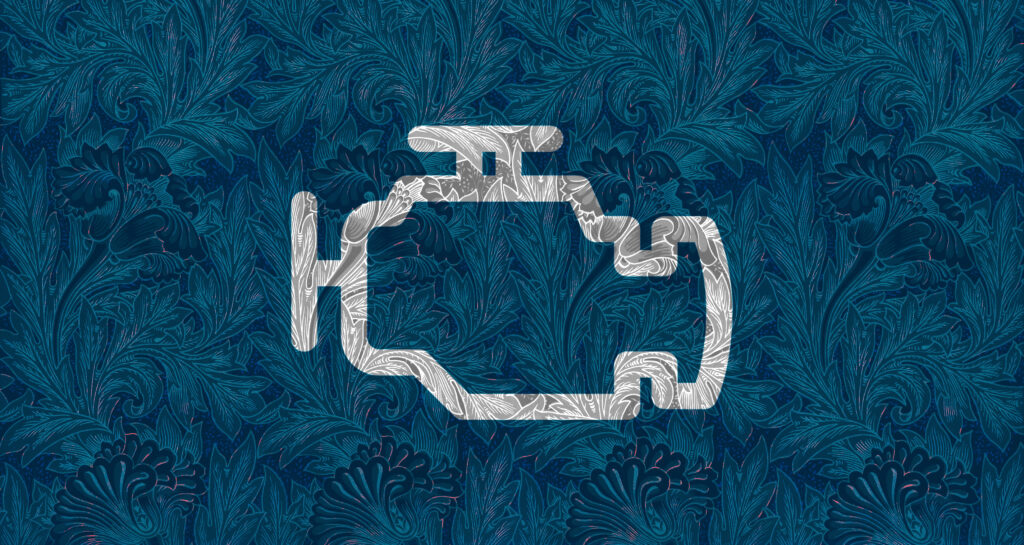Your dashboard decoded: Warning signs you should pay attention to
Published on April 14, 2025

We’ve all been there – suddenly, that little warning light on your dashboard turns on, and you’re left wondering if your car is giving you a subtle cry for help or just a random reminder.
It’s time to decode those mysterious symbols and turn your dashboard into an open book. In this guide, we’ll break down the warning signs you really need to pay attention to so you can keep your ride running smoothly and avoid any unexpected “uh-oh” moments.
I saw the sign…

Check engine
The check engine light is the one everyone dreads most, and for good reason.
It’s also the most ambiguous. Here’s what to do when you see it.
✅ 1. Don’t panic: The check engine light could indicate anything from a minor issue, like a loose gas cap, to something more serious, like engine trouble.
✅ 2. Check the gas cap: Ensure it’s tight. A loose or damaged gas cap can trigger the light.
✅ 3. Avoid ignoring it: Even if the car seems to be running fine, it’s important to get it checked.
✅ 4. Schedule a diagnostic: Book an appointment with a mechanic to diagnose the problem.
✅ 5. Don’t delay: Address the issue early to prevent potential damage and costly repairs.

Battery
That little battery symbol on your dashboard might seem minor, but it’s a big deal. It doesn’t just mean something’s wrong with your battery—it’s a warning that your car’s charging system isn’t working properly. If your car doesn’t shut down right away, you still have time to act before it does.
Here’s what to do right away if the battery light comes on:
✅ 1. Turn off extras
Shut down anything that drains power—AC, radio, heated seats, phone chargers. This helps preserve your battery’s remaining charge.
✅ 2. Don’t turn the car off
If the engine is still running, keep it that way. Once you shut it off, it might not start again.
✅ 3. Check for obvious issues
If you’re comfortable, pop the hood and check for loose or corroded battery cables. A quick wiggle might reveal a bad connection.
✅ 4. Get to a mechanic
Drive to a repair shop as soon as possible. If the alternator is failing, your car could die mid-drive once the battery is drained.
✅ 5. Don’t ignore it
Even if everything seems fine, your car could stop running at any moment. Better to fix it early than end up stuck on the side of the road.

Coolant temperature
If the coolant temperature light appears (often shown as a thermometer in waves), it means your engine is running too hot. Here’s how to cool it down:
✅1. Pull over safely: As soon as you notice the light, stop driving to prevent engine damage.
✅ 2. Check coolant levels: Low coolant could be the issue. If safe, check your radiator and top off the coolant if needed.
✅3. Look for leaks: Inspect for any visible coolant leaks around the radiator or hoses.
✅4. Don’t continue driving: Driving with an overheating engine can cause serious damage.
✅ 5. Call your mechanic: Have your vehicle towed to a mechanic to diagnose potential problems like a broken water pump or radiator issues.
Taking quick action when the coolant temperature light comes on can help you avoid bigger issues and keep your car running smoothly for the long haul!

Transmission temperature
If the transmission temperature light appears (typically a thermometer inside a sun or gear icon), it means your transmission is overheating.
This one’s important! Here’s how to handle it:
✅ 1. Pull over safely: Stop driving to prevent further damage to your transmission.
✅ 2. Check transmission fluid: Low fluid levels could be the culprit. If you’re able, check and top off the fluid.
✅ 3. Avoid excessive towing: If you’ve been towing heavy loads, give the transmission time to cool down.
✅ 4. Let it cool: Allow your car to sit for a while before driving again to let the transmission cool down.
✅ 5. Call your mechanic: If the light stays on or you’re unsure, have a mechanic inspect your transmission for wear or damage.
Don’t stress—catching the transmission temperature light early helps keep your ride running smoothly and prevents any major drama down the road!

Oil pressure warning
The oil pressure warning light, usually a red oil can, is a signal that something’s off. Here’s how to fix it:
✅ 1. Stop and check oil levels: If the light comes on, check your oil level. If it’s low, top it off and see if the light goes off.
✅ 2. Don’t ignore it: Even if the oil level is fine, the light could indicate a more serious issue.
✅ 3. Check for leaks: A drop in oil pressure could be due to a leak or a broken oil pump.
✅ 4. Schedule a mechanic visit: If the light stays on after adding oil or if you suspect a bigger issue, get your car checked out immediately to prevent engine damage.
Keep an eye on that oil pressure light, and a quick check or visit to your mechanic will have your engine running like a dream in no time!

Tire pressure monitoring system
An exclamation point inside a bowl, except the bowl has little nubs, like the treads of the tire. Cute, right? Not when you’re driving on (under or over) inflated tires!
Pull over and follow these steps:
✅ 1. Check tire pressure: The first step is to check your tire pressure. If it’s low, fill them up to the recommended level.
✅ 2. Look for leaks or damage: Take a quick look for any visible damage, like a nail or tear that could be causing air loss.
✅ Get professional help: If you can’t find anything or the light won’t turn off, visit a mechanic to check for any hidden issues like a slow leak.
Next time that tire pressure light pops on, don’t panic—it’s an easy fix that’ll keep you cruising in no time!

Brake system
Another exclamation with two lines surrounding it means something is wrong with your brakes.
Stop and follow these steps.
✅1. Check the parking brake: First, make sure your parking brake isn’t engaged. If it is, release it, and the light should turn off.
✅ 2. Inspect brake fluid levels: Low brake fluid could trigger the light. Check and top it off if necessary.
✅ 3. Look for worn brake pads: If your brake pads are worn, it might be time for a replacement.
✅4. Consider the ABS: If the light is related to the anti-lock braking system (ABS), your car may still be safe to drive, but you should get it checked soon.
✅ 5. Visit a mechanic: If the light stays on or you notice braking issues, have a mechanic inspect your brake system to ensure your safety.
Brakes are essential—don’t delay in getting them checked!

Traction or stability control
The traction or stability control light, often shown as a car on a windy road, means your vehicle is working to prevent slipping. Here’s what to do if it turns on:
✅ 1. Understand the system’s purpose: If you’re driving on slippery roads, the light is normal—it means your system is actively helping with traction.
✅ 2. Check for dry road issues: If the light comes on while driving on dry roads, there could be an issue with the system.
✅ 3. Look for a wheel speed sensor issue: A common culprit for the light turning on is a malfunctioning wheel speed sensor.
✅ 4. Get it checked: If the light stays on, it’s a good idea to have a mechanic inspect your system to ensure everything’s working properly.
Your vehicle is looking out for you—make sure it’s in tip-top shape!

Lamp out
This one has an exclamation point inside a bright and cheerful sun— except your lamp is out, not illuminated. Driving without a headlight or taillight can result in a ticket, so make sure it gets changed!
✅1. Check your lights: Inspect both your headlights and taillights to see if one is out.
✅ 2. Replace the bulb: If a light is out, replace the bulb to avoid driving with a faulty light.
✅ 3. Don’t delay: Driving without a headlight or taillight can result in a ticket, so take care of it as soon as possible.
✅ 4. Visit a mechanic: If you can’t figure out which light is out or if the problem persists, a mechanic can help.
Check your lights, replace any dead bulbs, and keep your car shining bright.

Before you hit the road
And there you have it: your dashboard decoded and ready to go!
Now, when those warning lights pop up, you’ll be able to stay calm and know exactly what your car is trying to tell you. So, next time you’re behind the wheel, you can drive with confidence, knowing you’re prepared for whatever comes your way.
Safe travels!



